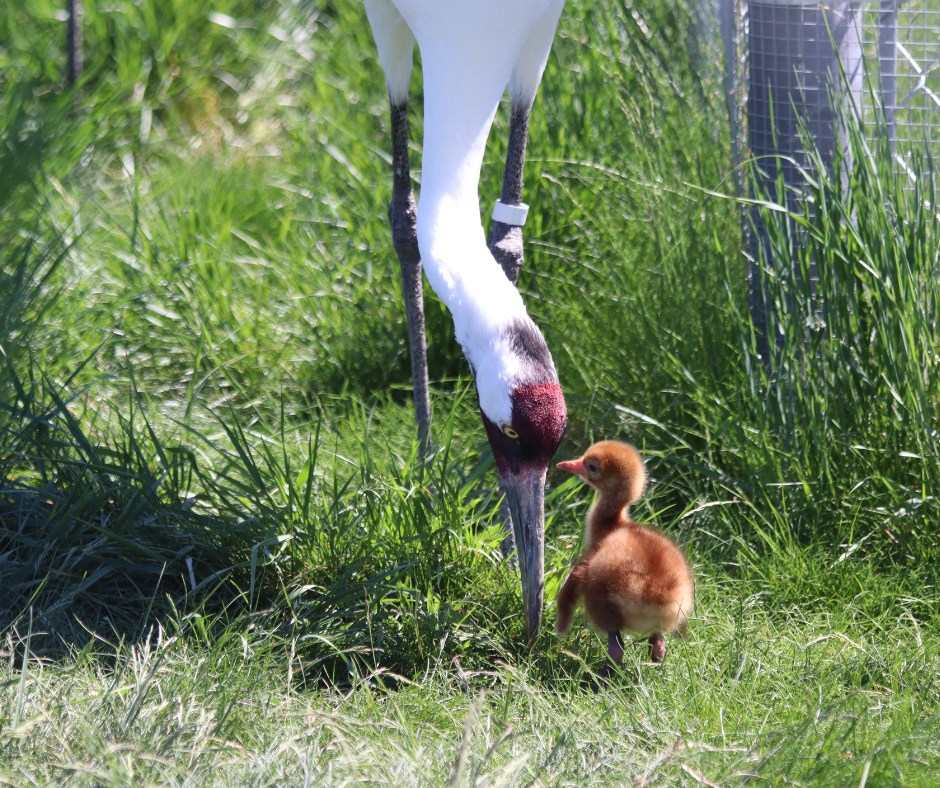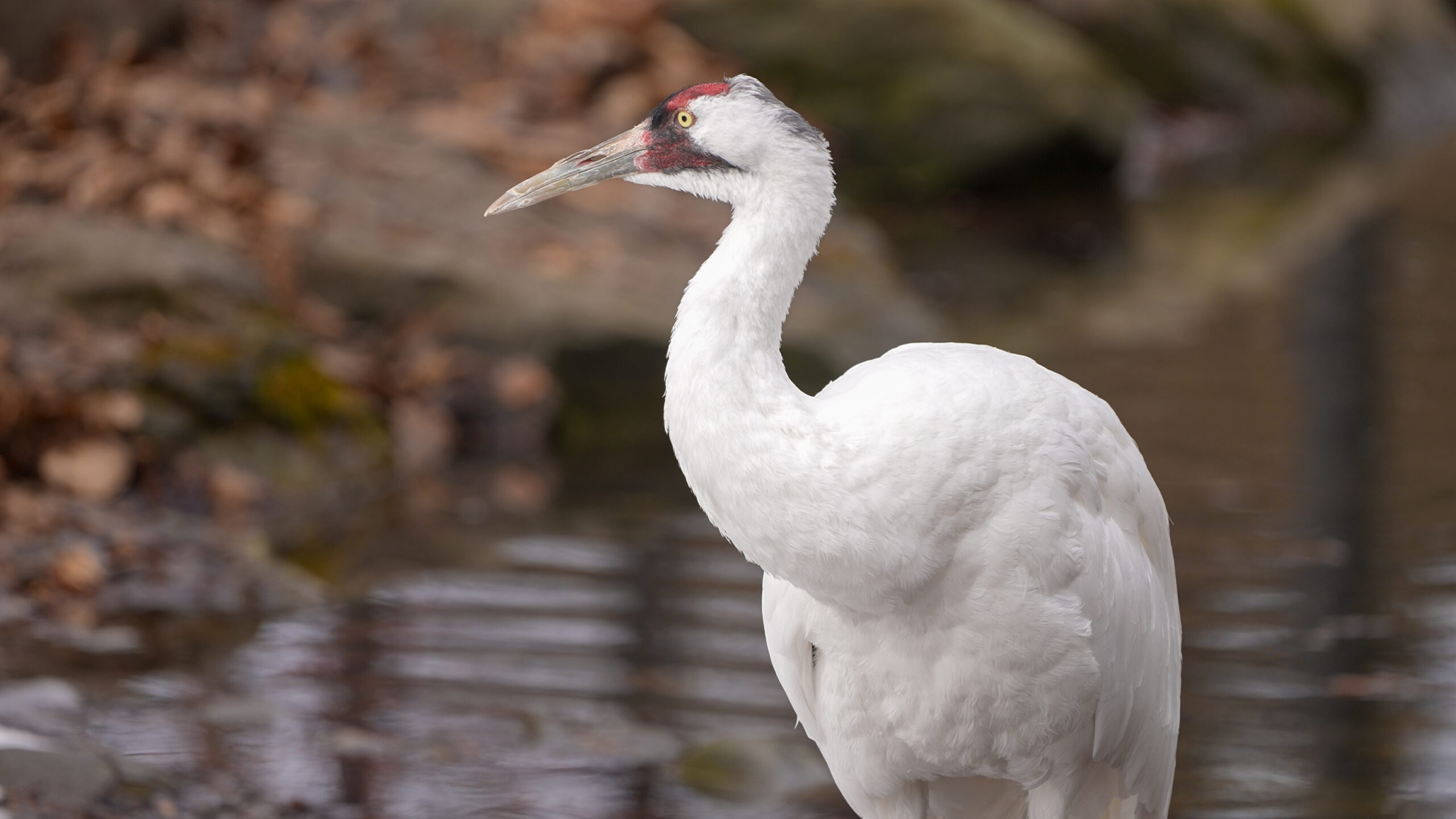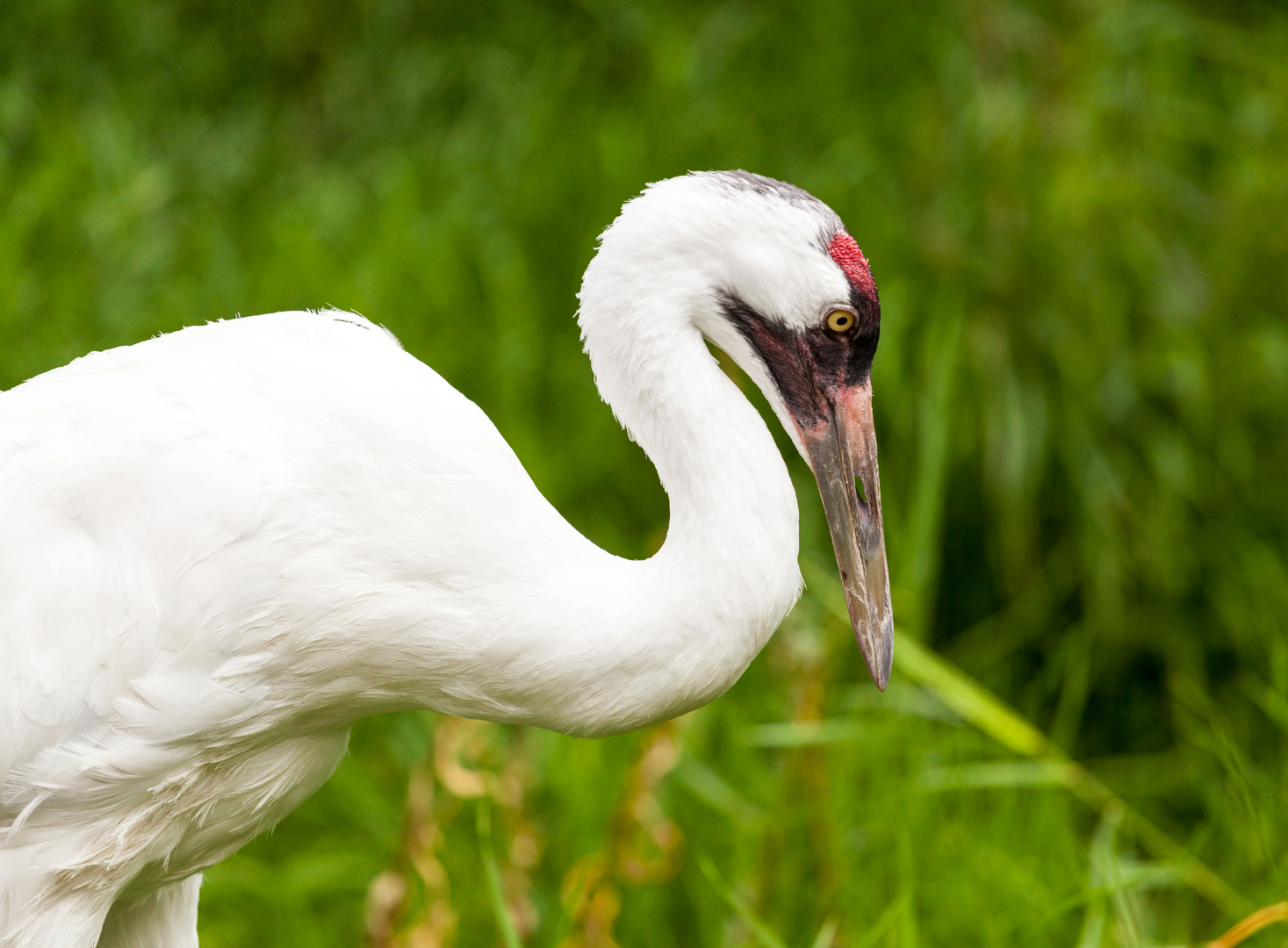Grus americana
Whooping Crane
Standing nearly five feet tall, making them the tallest bird in North America, and covered in bright white plumage, the whooping crane is a truly magnificent bird. They call with a loud, trumpeting bugle, and when courting, they call in unison.
The situation
Back from the brink
In the 1940s, only 21 whooping cranes remained in the wild due to overhunting and habitat loss. Since then, dedicated whooping crane captive breeding and reintroduction programs have contributed to an Eastern migratory population and several non-migratory populations in Louisiana and Florida, totaling approximately 699 wild individuals in 2023.
But not yet thriving
However, these reintroduced populations are not yet self-sustaining. The Aransas Wood Buffalo population is the only self-sustaining population, and is small, numbering only 550 individuals in 2024/25 Conservation efforts have improved the status of these endangered birds, but challenges remain. Poor reproductive success, habitat limitation, anthropogenic and climatic stressors, and poaching are on-going threats to this species.
Photo Credit: John McKinnon 2021, Wood Buffalo National Park aerial view
Our work
The Wilder Institute has been leading Canada’s only conservation breeding program for this species. Working with our partners, we study whooping cranes in and near Wood Buffalo National Park. Researchers are using satellite imagery to detect nesting whooping cranes and remote cameras to study causes of reproductive failure.
Low egg hatch rate is another challenge to whooping cranes. To identify and understand the reasons for hatch failure in whooping crane populations, our researchers need to discriminate between male infertility and early embryo death. The knowledge gained of this underlying biology will help increase the efficacy of conservation breeding programs and identify important research gaps.
In addition, together with our partners, the Wilder Institute is studying incubation at wild whooping crane nests in Louisiana. Researchers are using data-logger eggs to measure humidity, temperature, and egg turning, along with nest observation data to understand why some eggs hatch and others do not. This research will be used to improve artificial incubation practices and determine management actions to increase hatch success in reintroduced populations.
Conservation breeding
Since 1992, the Wilder Institute has been part of conservation breeding for whooping cranes. Whooping cranes hatched at the Archibald Biodiversity Centre (ABC) at the Wilder Institute/Calgary Zoo become part of the SAFE conservation breeding program or are released in the Eastern migratory or Louisiana non-migratory populations. The eggs at our ABC breeding facility are parent incubated and reared either by their biological parents or conspecific foster parents.
Our conservation impact
The Wilder Institute aims to strengthen our understanding of the challenges the whooping cranes are faced with. By improving translocation success through research of alternate methods and improving captive and wild reproductive success, we aim to establish self-sustaining populations of whooping cranes in the wild that are genetically stable and resilient to environmental events.
Inclusive, community engaged conservation
The Wilder Institute is committed to equitable, inclusive conservation to achieve a future where people and wildlife thrive together. Canadian whooping crane nesting habitat is located on the traditional territories of Treaty 8 Indigenous Nations. Our Whooping Crane Program is dedicated to building meaningful connections with and learning from the communities that are traditional stewards of this land, and we are striving to move forward with recovery actions that reflect their knowledge, values, and goals.
Whooping Crane Festival
We are honoured to participate in the annual Whooping Crane Festival in Fort Smith, Northwest Territories—an inspiring celebration of the return of one of Canada’s most iconic and endangered birds to its nesting grounds in Wood Buffalo National Park, hosted by the Thebacha Leadership Council (a collaboration between the Fort Smith Metis Council, Salt River First Nation, Tthebatthı Dënésułıné, and the town of Fort Smith). 2025 marks the second annual festival, where our team connects with the community through educational activities, crane-focused programming, and shared conservation stories to celebrate the deep connections between people, place, and the recovery of the whooping crane.
Did you know?
Teamwork
Whooping crane conservation is about collaboration and we are grateful to work alongside the following partners:







